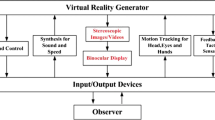Abstract
Screen content denotes images generated by computers, which consists of texts, graphics and synthetic images. Conventional encoding strategies developed for natural content, which are premised on the strong temporal relevance, may not work well for screen content. This is because the irregular motion of objects results in the weak temporal relevance in screen content, which also makes the selection of reference pictures not optimal. This paper proposes an optimal picture reordering scheme for screen content coding to enhance the temporal relevance of screen content. In our scheme, a concept of inter-picture correlation is introduced to help formulate the temporal relevance problem, and a model of permutation is proposed to produce the new order of the pictures. To further improve the coding efficiency, a reference picture selecting algorithm is also proposed. Better compression performance can then be achieved. Compared with SCC extension of HEVC, on average, 2.82% bit rate saving can be achieved by reordering the pictures and 4.40% bit saving is achieved by further utilizing the reference pictures selection algorithm.











Similar content being viewed by others
References
Bjontegaard G (2008) Improvements of the bd-psnr model. In: ITU-T SG16/Q6, 35th VCEG Meeting, Berlin, Germany, July, 2008
Bross B, Han W J, Sullivan G J, Ohm JR, Wiegand T (2012) High efficiency video coding (hevc) text specification draft 9. document JCTVC-K1003, JCT-VC
Charikar M S (2002) Similarity estimation techniques from rounding algorithms. In: Proceedings of the thiry-fourth annual ACM symposium on theory of computing, pp 380–388
Chen C, Han J, Xu Y, Bankoski J (2016) A staircase transform coding scheme for screen content video coding. In: 2016 IEEE International Conference on Image Processing (ICIP). IEEE, pp 2365–2369
Flynn D, Marpe D, Naccari M, Nguyen T, Rosewarne C, Sharman K, Sole J, Xu J (2015) Overview of the range extensions for the hevc standard: tools, profiles, and performance. IEEE Trans Circuits Syst Video Technol 26(1):4–19
Hevc test model(hm). https://hevc.hhi.fraunhofer.de/trac/hevc/browser (2012)
Lan C, Xu J, Wu F (2011) Compression of compound images by combining several strategies. In: 2011 IEEE 13th International workshop on multimedia signal processing. IEEE, pp 1–6
Li B, Xu J (2014) Hash-based motion search. document JCTVC-Q0245 JCT-VC
Li B, Xu J, Wu F (2014) A unified framework of hash-based matching for screen content coding. In: 2014 IEEE Visual communications and image processing conference. IEEE, pp 530–533
Manju V N, Fred A L (2019) An efficient multi balanced cuckoo search k-means technique for segmentation and compression of compound images. Multimed Tools Applic 78(11):14897–14915
Ohm J-R, Sullivan G J, Schwarz H, Tan T K, Wiegand T (2012) Comparison of the coding efficiency of video coding standards—including high efficiency video coding (hevc). IEEE Trans Circ Syst Video Technol 22(12):1669–1684
Sullivan G J, Topiwala P N, Luthra A (2004) The h. 264/avc advanced video coding standard: overview and introduction to the fidelity range extensions. In: Applications of digital image processing XXVII, vol 5558. International Society for Optics and Photonics, pp 454–474
Sullivan G J, Ohm J-R, Han W-J, Wiegand T (2012) Overview of the high efficiency video coding (hevc) standard. IEEE Trans Circ Syst Video Technol 22(12):1649–1668
Wang S, Ma L, Fang Y, Lin W, Ma S, Gao W (2016) Just noticeable difference estimation for screen content images. IEEE Trans Image Process 25(8):3838–3851
Xiao W, Li B, Xu J (2016) Bottom-up hash value calculation and validity check. Document JCTVC-W0078 JCT-VC
Xiao W, Li B, Xu J, Shi G, Wu F (2016) Weighted rate-distortion optimization for screen content coding. IEEE Trans Circuits Syst Video Technol 28(2):499–512
Xiao W, Shi G, Li B, Xu J, Wu F (2016) Fast hash-based inter-block matching for screen content coding. IEEE Trans Circuits Syst Video Technol 28(5):1169–1182
Xu J, Joshi R, Cohen R A (2015) Overview of the emerging hevc screen content coding extension. IEEE Trans Circuits Syst Video Technol 26 (1):50–62
Zhang H, Zhou Q, Shi N, Yang F, Feng X, Ma Z (2016) Fast intra mode decision and block matching for hevc screen content compression. In: 2016 IEEE International Conference on Acoustics, Speech and Signal Processing (ICASSP). IEEE, pp 1377–1381
Zhu W, Ding W, Xiong R, Shi Y, Yin B (2012) Compound image compression by multi-stage prediction. In: 2012 Visual communications and image processing. IEEE, pp 1–6
Zhu W, Ding W, Xu J, Shi Y, Yin B (2014) 2-d dictionary based video coding for screen contents. In: 2014 Data compression conference. IEEE, pp 43–52
Zhu W, Ding W, Xu J, Shi Y, Yin B (2015) Hash-based block matching for screen content coding. IEEE Trans Multimed 17(7):935–944
Acknowledgments
This work was supported by the National Key R&D Program of China (No. 2021ZD0111902), National Natural Science Foundation of China(61976011, 62272016, U21B2038, U1937207), the Common Program of Beijing Municipal Commission of Education under Grant KM202010005013, the Opening Project of Beijing Key Laboratory of Internet Culture and Digital Dissemination Research, and by the Special Academic Collaborative Research Projects between BJUT and NTUT(NTUT-BJUT-111-02).
Author information
Authors and Affiliations
Corresponding author
Additional information
Publisher’s note
Springer Nature remains neutral with regard to jurisdictional claims in published maps and institutional affiliations.
Rights and permissions
Springer Nature or its licensor (e.g. a society or other partner) holds exclusive rights to this article under a publishing agreement with the author(s) or other rightsholder(s); author self-archiving of the accepted manuscript version of this article is solely governed by the terms of such publishing agreement and applicable law.
About this article
Cite this article
Shi, Y., Wang, Y., Wang, J. et al. Optimal sequence reordering for low delay screen content coding. Multimed Tools Appl 83, 635–654 (2024). https://doi.org/10.1007/s11042-023-15345-6
Received:
Revised:
Accepted:
Published:
Issue Date:
DOI: https://doi.org/10.1007/s11042-023-15345-6




